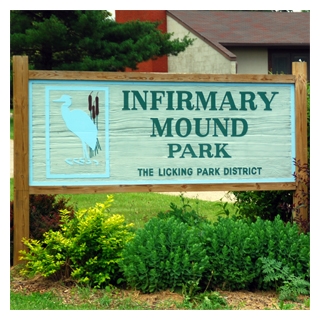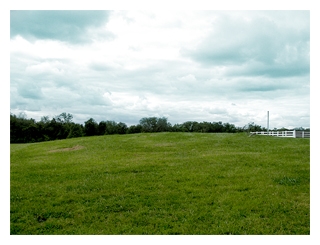 According to “History of the Licking County Infirmary” (by Bill Markley), the Licking County Infirmary was created in 1838, and under the direction of it’s newly elected president (successful local farmer Walt Wright) and superintendent (businessman Truman B. French), basic housing supplies were purchased. The vision for a county “Poor House” was realized on this property on December 11th, 1838, providing a home for the county’s destitute, homeless, and other less fortunate members of society.
According to “History of the Licking County Infirmary” (by Bill Markley), the Licking County Infirmary was created in 1838, and under the direction of it’s newly elected president (successful local farmer Walt Wright) and superintendent (businessman Truman B. French), basic housing supplies were purchased. The vision for a county “Poor House” was realized on this property on December 11th, 1838, providing a home for the county’s destitute, homeless, and other less fortunate members of society.
Many of the “inmates” (as they were so referred) were crippled or mentally ill, and several suffered from consumption (the latter stages of tuberculosis). Prostitutes and unmarried, pregnant females were also common residents.
Local townspeople were employed as medical staff, blacksmiths, weavers, shoemakers, and to provide transportation for the inmates, and in 1841, local farmhands (and some able-bodied inmates) were hired to plant crops on site to help provide wheat, corn, hay, oats and potatoes for the facility. Cattle, sheep and hogs grazed the fields, and fruit trees provided even more produce.
An additional stone building was erected in 1944 to serve as expanded housing, and in 1849 more buildings were added, including a “spinning and weaving” house, a shoe shop, a bake house, a wash house, store houses, a slaughter house, milk houses, a smoke house, an ice house, a wood house, a hog house, stables, barns, etc…
Population of the “Infirmary” (as it became known) increased steadily from the initial 13 residents on it’s first year anniversary, to over 100 residents in 1853. By 1862, the original log residence had been replaced by a brick structure, and annual production of the resident farms and fields had skyrocketed; according to the 1866 annual report, “…1600 bushels of corn, 400 bushels of wheat, 700 bushels of potatoes, and 7902 pounds of pork…” (among many other items) had been produced that year alone.
The success of the Infirmary continued for several years, until 1869, when a small fire broke out in a stone outbuilding which housed the mentally ill. 10 inmates were trapped in their cells and perished in the fire.
During the 1890’s, electric, gas heating, and phone services were added. Plumbing was updated, a hospital facility was created, nurses were hired, and a new barn was built.
In 1918, a public sentiment towards Prohibition caused a steep decline in Liquor License Fees used to finance the “Infirmary Fund”, which forced the Commissioners to borrow $3,000 to pay off outstanding bills and to meet further expenses. Bonds were also sold to generate revenue for what became known as “The County Home”.
In the 1920’s, many of the severely mentally ill residents were moved to other institutions and sanitariums as a cost cutting measure. Private agencies such as the Red Cross assisted with transportation. Farmland was leased out, and excess crops and livestock were sold in an effort to raise more revenue for the struggling Home.
The institute continued to struggle financially in the 30’s and 40’s, and in 1951 a devastating fire destroyed a barn, livestock, crops and equipment. In 1967, the Commissioners voted unanimously to move the Infirmary’s residents to the Licking County Tuberculosis Sanitarium Building, and in 1969, the move took place.
By 1990, the main residential building had seriously deteriorated, and was demolished in 1997. “Infirmary Mound Park” (a 326 acre park featuring picnic shelters, hiking and horseback trails, and fishing areas) now resides on the site of the former institute, and is maintained by the Licking Park District. The location also houses the LPD’s main offices.

The site is also home to "Infirmary Mound" (hence the park name) believed to have been constructed by the “Moundbuilders”, prehistoric people who inhabited this area of Ohio centuries ago. Most of the mound has been lost due to the utilization and development of the surrounding property, but a portion of the mound is still visible at:
N 40 01.383 W 82 30.855
near the park’s Horse Arena.
Special thanks to Tami McAdams of the Licking Park District for her help in obtaining permission for the placement of this cache.
We encourage you to explore this beautiful park and the 7+ miles of hiking/horse trails that it offers. A large, printable trail map of the park (in .PDF format) is available AT THIS LINK.